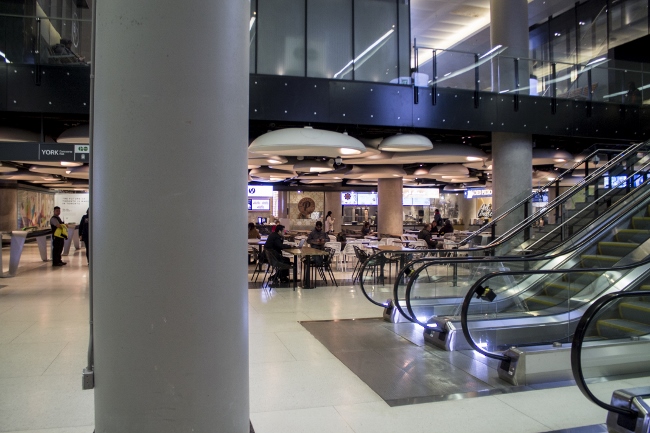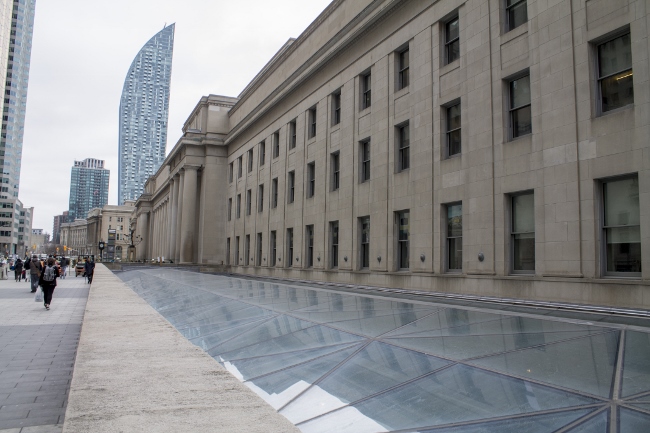
Crews target late 2020 for completion of long-delayed $823M revamp of Toronto’s Union Station
By David Kennedy
Construction InfrastructureThe complex project to bring the terminal into the 21st century involved major excavation work and interior reconstruction
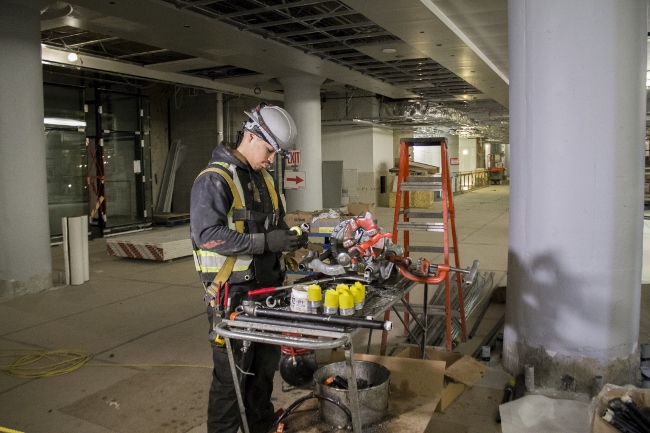
A worker on the Bay Concourse level of Union Station. The city expects to hand this portion of the station over to Metrolinx later this year. PHOTO: David Kennedy
TORONTO—With no tower cranes overhead and no high-rise jutting up over Front Street, the years-long effort to revitalize Toronto’s Union Station is somewhat less conspicuous than many of the other major projects underway across the city — at least for those who don’t often venture inside the nearly 100-year-old station. For GO Train commuters and intercity VIA Rail passengers on the other hand, who have spent the better part of a decade navigating the often bewildering construction site, the end can’t come soon enough.
Work on Toronto’s downtown train terminal has been ongoing since 2011 and faced numerous hurdles along the way, including millions in cost overruns and years of delays. With the end now in sight, however, city officials offered media a look inside several overhauled sections of the station April 30.
The city has been tackling the project in stages. It wrapped up most work on the York Concourse, which makes up a large portion of the west end of Union, in 2015. A new food court began serving commuters last fall and was the first of the new underground segments to open. Focus has since shifted to the Bay Concourse on the east side of the station, where exposed concrete and mechanical systems are still the norm. The city and its general contractor for the revitalization, Bondfield Construction Company Ltd., expect to complete work on the final pieces of the station by the end of September 2020.
It’s been a long eight years since work began.
The current station opened in 1927. It’s a prominent heritage site, as well as a vital transit hub for some 300,000 commuters.
“It’s an extremely complicated project,” said Frank Molinari, director of Project Management for the City of Toronto. “You can’t anticipate all of the things that are required in a heritage structure of this nature. You don’t know when you open up a wall what you’ll find.”
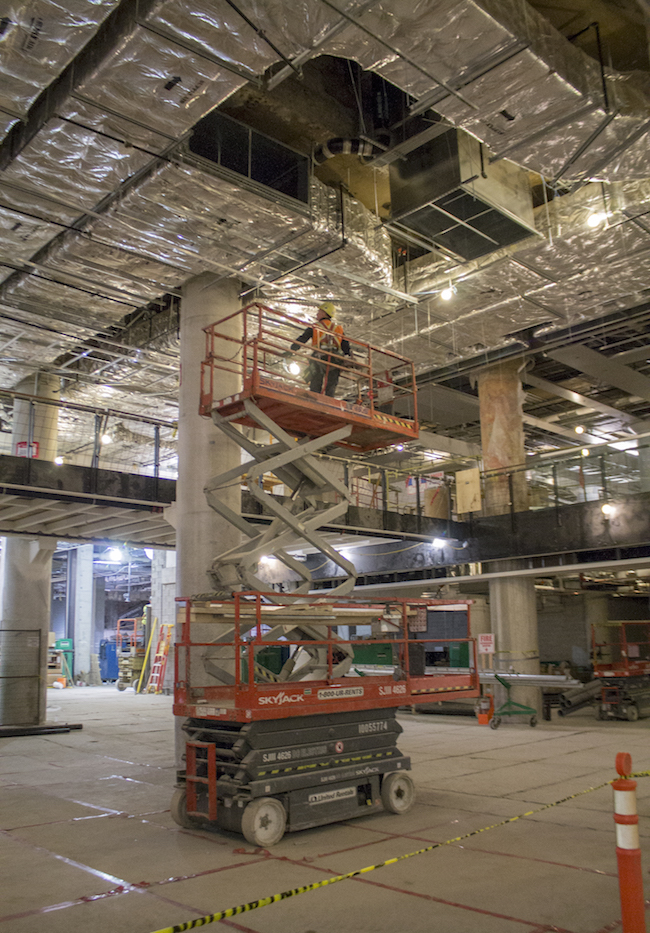
A worker on a scissor lift in an underground portion of the station that will eventually house retail shops. PHOTO: David Kennedy
Early work on the revitalization required significant excavation to expand the station’s footprint. At one point, contractors were hauling nearly 50 truckloads of material from the site every work day, all while using temporary supports to replace old concrete columns that held up the tracks. To keep train traffic moving and thousands of passengers safe while replacing nearly 450 columns was no easy task.
While this “dig down” is long finished, crews are now working to hand over the final few sections of the job site to the city’s partners, such as Osmington Inc., which is responsible for the station’s retail space. The company plans to open a “fresh food market” featuring independent Toronto shops directly under the Via Concourse, as well as a more traditional retail shopping area below the Bay Concourse.
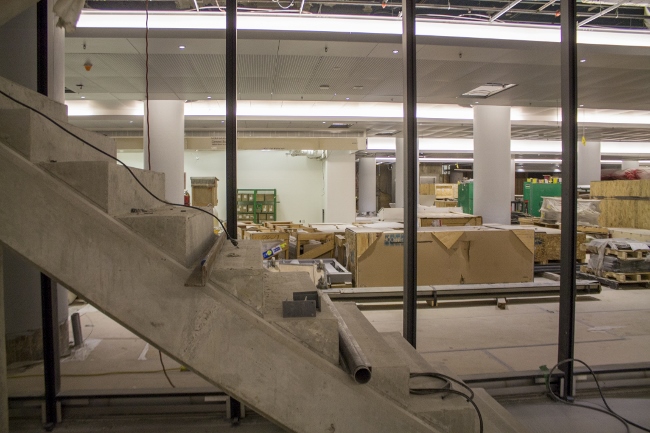
A staircase in the Bay Concourse. Crews are working on various finishings on the level. PHOTO: David Kennedy
Transit agency Metrolinx, meanwhile, is scheduled to take over the Bay Concourse when the majority of the work on the area is completed later this year. Its own crews will then step in and prep the area for passengers. The GO Train operator hopes to open the area to travellers by March 2020, several months ahead of the retail segments situated below it.
With the final completion of the $823 million project now scheduled for late 2020, the job is about five years behind schedule. Brad Ross, chief communications officer for City of Toronto, pointed to the complexity of the job and need to keep the station operating during construction as two of the reasons for the delays.
“Prior to all of this work, Union Station was not built for the 21st century, let’s face it,” he said.
Overall, the project will triple the amount of usable space inside the station and add amenities that have become standard in similar transit hubs around the world.

Stairs and escalators leading up from the underground level at the east side of the station. PHOTO: David Kennedy
Despite the 2020 target, officials warned the end of the revitalization job doesn’t mean the end of construction at Union Station.
Metrolinx, for instance, has major plans to expand train service. Last year it issued a request for proposals to three pre-qualified construction teams looking to build a new southern platform at Union. It also plans to widen existing GO Train platforms to bolster safety.
So, while the revitalization of the most highly trafficked areas of Union may be nearing an end, commuters expecting a station entirely free of construction are certain to be disappointed.

